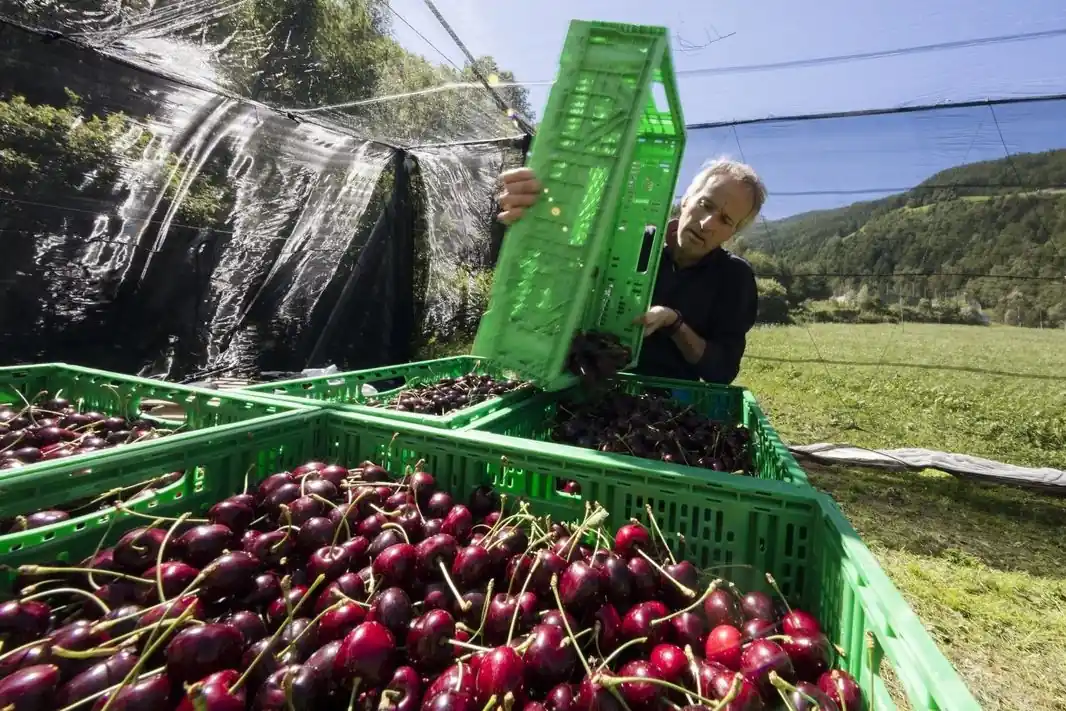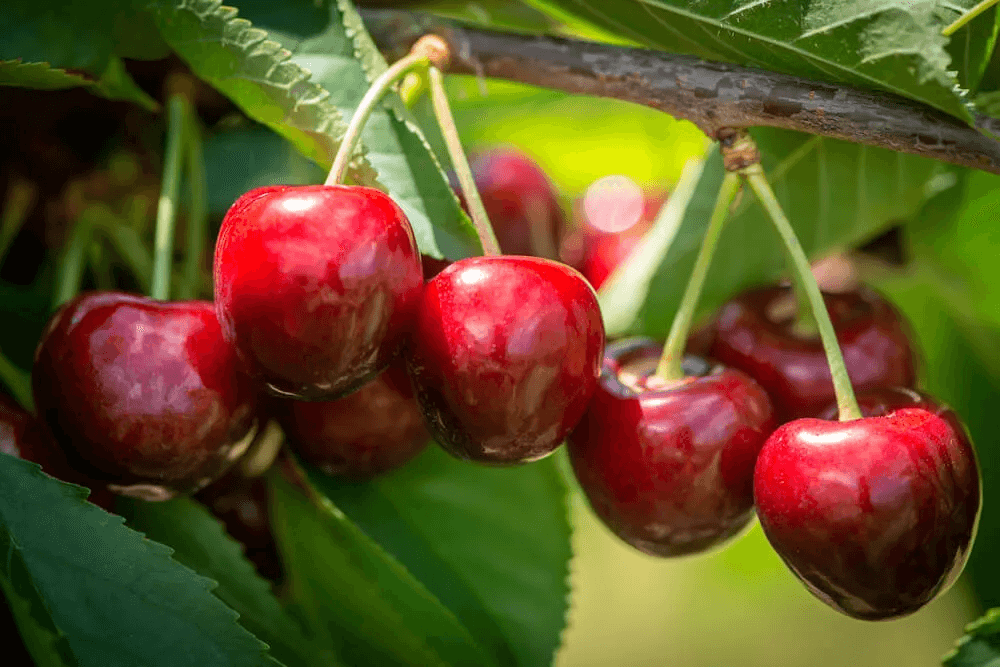Birds, a threat to crops or friends to be attracted as useful for integrated pest management strategies? At the 'Stone Fruit Day' held in mid-January at the Wenatchee Convention Center (Washington State), organised by Washington State University, the focus was on the very role of birds in agriculture, looking at the pros and cons and analysing the results of the latest research on the subject.
Indeed, birds are perceived by fruit growers as a threat for various reasons, but it has been shown that their role can also be a positive one. Speaking at the event were Prof. Catherine Lindell from Michigan State University and Prof. Davide Gondoliera from the University of Kentucky.
It is essential to assess one's own levels of risk and damage from birds
Their presentations did not particularly focus on the role of birds in cherry farming, but what they highlighted is generally applicable to the agricultural world and more specifically to fruit farming, and can therefore certainly be useful for cherry growers as well.
For those who fear birds, for fear that they will reduce the harvest by damaging the fruit, the priority is to understand how to keep them out of the fields and how to reduce damage.
Catherine Lindell focused on a few principles: when the harvest is already lower, that is when the birds are most dangerous, in fact proportionally the damage will be greater; areas of the orchard where ripening is early are more targeted; isolated crops surrounded by non-cultivated areas are more at risk as well as borders, compared to the centre of a plot.
Furthermore, with a view to devising a preventive strategy with respect to the damage that birds might cause, it should be borne in mind that there are certain circumstances that favour the birds' decision to flock to the very fields of that specific farm: areas of spontaneous vegetation close to the orchard can provide them with shelter from predators, hanging cables on which they can rest, easily accessible grain and water for them nearby, and convenient resting sites.
All these conditions make it easier for them to be present, so from a preventive perspective the ideal is not to give them a reason to stick around.
In order to demonstrate the first principle mentioned, namely that the years that are already the poorest in terms of product are also the ones in which the birds are likely to attack the crop, Prof. Lindell showed the results of research from about 10 years ago, carried out in Michigan (USA) on blueberry cultivation in 2012, 2013 and 2014.
"In 2012," Professor Lindell said, "we had a very hot start to the season and then we had frost, and the damage during flowering was very high. We sampled three years in a row, but 2013 and 2014 were normal years in terms of harvest quantity. 2012 turned out to be the year with the most bird damage".
In the same three years, the University of Michigan team also carried out sampling in six cherry orchards. The result was very similar to that of the blueberries: 2012 was a year in which the percentage of bird damage was high, in particular in grove no. 3, the damage rate exceeded 50 per cent. "One must therefore bear in mind that when conditions are favourable to greater damage, one must think of a strategy to lower it," said Professor Lindell again.
Scare them away or prevent them from entering, some techniques to avoid bird damage
The first strategy that springs to mind is to scare the birds away. This can be done with cannons that produce loud bangs but, according to evidence, this method is all the more effective the more the cannon is moved so that the birds do not get used to it.
Of course, moving them regularly and randomly is labour-intensive. Somewhat the same reasoning applies to what are called 'tubemen', which are air-filled scarecrows that move and dance. Researchers tested them in 2013 and 2014, in 9 different blueberry fields.
What they saw was a downward trend in damage where tubemen were present but, the professor specified, 'this is only a trend, we cannot say there is a statistically valid correlation'.
Flying drones can also be a strategy, but at the moment drones need someone to fly them, with all that that entails. There is also the fact that, according to research, the most effective are drones disguised as birds of prey; if the drone is flown 'naked', the birds ignore it.
And if fake raptors are effective, real raptors are even more so. Among the trials that have been carried out over the years is the idea of attracting kestrels to orchards (2016-'17-'18). The researchers did this by preparing plywood shelters for them, installed very high up on poles. The strategy was successful, particularly in the so-called cherry region in northern Michigan.
Concluding the overview, Catherine Lindell pointed out: "The ideal way to scare the birds is to use all these methods at the same time, do it very early in the season, and move each deterrent as many times as possible within the field.
So, on the one hand you can decide to scare them away, and on the other hand you can use nets to keep them out of the crop. In this regard, the Michigan State University team conducted an initial experiment in 2023, which will then have to be repeated to give consistency to the results.
Eight blocks of different intensive waxworks in Michigan were observed for five minutes, once a week. Within each waxworks, two adjacent rows were observed, one area was netted and the other was not. The researchers wanted to see if there was a difference, in terms of the percentage of damage caused by birds and in terms of fruit quality.
The first results showed that where there was no net, the damage was as high as 70% in some cases. Where there was netting, on the other hand, they never exceeded 5%. In terms of fruit quality, no statistically significant difference was noted.
Birds, some species can be allies in the containment of certain pests
Birds are much feared by farmers, on the one hand because of the damage they can cause by feeding on the crop, and on the other hand because of the risk of them transmitting diseases or contaminating the produce with their faeces. Yet, in documented cases, some bird species can be useful.
Some birds could possibly be included in an integrated pest management strategy. Birds can in fact also be natural enemies of phytophagous pests that could attack the crop. One should therefore look at the 'net effect' of their presence in the field. Research is ongoing on this issue.
'Focusing on the positive influences of birds,' said Prof. David Gonthier of the University of Kentucky, 'we all know that they eat a lot of insects. When it comes to an agricultural environment, what the birds find for the most part are pests. Simply by feeding, birds become predators and biological containment agents'.
 Image 1: Potential benefits and harms that birds can provide to agro-ecosystems.
Image 1: Potential benefits and harms that birds can provide to agro-ecosystems.
The researchers conducted an experiment in strawberry fields in California in 2019. They worked within 6 farms and created two plots, one in which birds were excluded and the other with access. During 12 weeks, they assessed insect damage and bird damage. The result was that, where the birds had no access, pest attacks were significantly higher.
Certainly, there was no bird damage in that plot, but the damage caused by birds in the plot to which they had access was almost identical to the insect damage avoided, thanks to the presence of birds. As Professor Gonthier points out, one could say that the two effects cancel each other out.
But which insects become bird food and which bird species are 'friends' of the fruit grower, which bird species are harmful and which can act both ways? To begin to establish this and to distinguish between species and species, the researchers analysed the faeces of various birds, the idea being to understand what they eat.
They examined 423 samples and looked at pests particularly in strawberry cultivation. Twenty per cent of the samples showed the presence of earwigs (Forticula auricolaria), still another 20% or so contained Lygus rugulipennis also known as the strawberry bug, a phytophagus that deforms the product and is key in the area.
Drosophila Suzukii was found in smaller percentages, although it is not known whether the birds ate the strawberries containing the larvae, beet cutworm, peach nottua and LBAM, an apple moth that is a quarantine insect. The University of Kentucky team then divided the bird species into those who eat only insects, those who eat only strawberries (in this specific case) and those who have no preference and can eat both.
Among the birds to be feared because they consume strawberries (the experiment was conducted in strawberry fields) are the migratory thrushes, the Mexican bullfinch and the American goldfinch. Among those classified as 'good guys', or, literally, 'the good guys', the winner is the swallow.
'I think,' said the professor, 'that the swallow should be promoted and its presence increased. We have never seen them consume strawberries, they have a very low presence of pathogens that can contaminate food, they are present and abundant in any kind of landscape, even in exclusively agricultural landscapes'.
Image: Drawing from 'Journal of Integrated Pest Management (2020)
Barbara Righini
Cherry Times - All rights reserved













